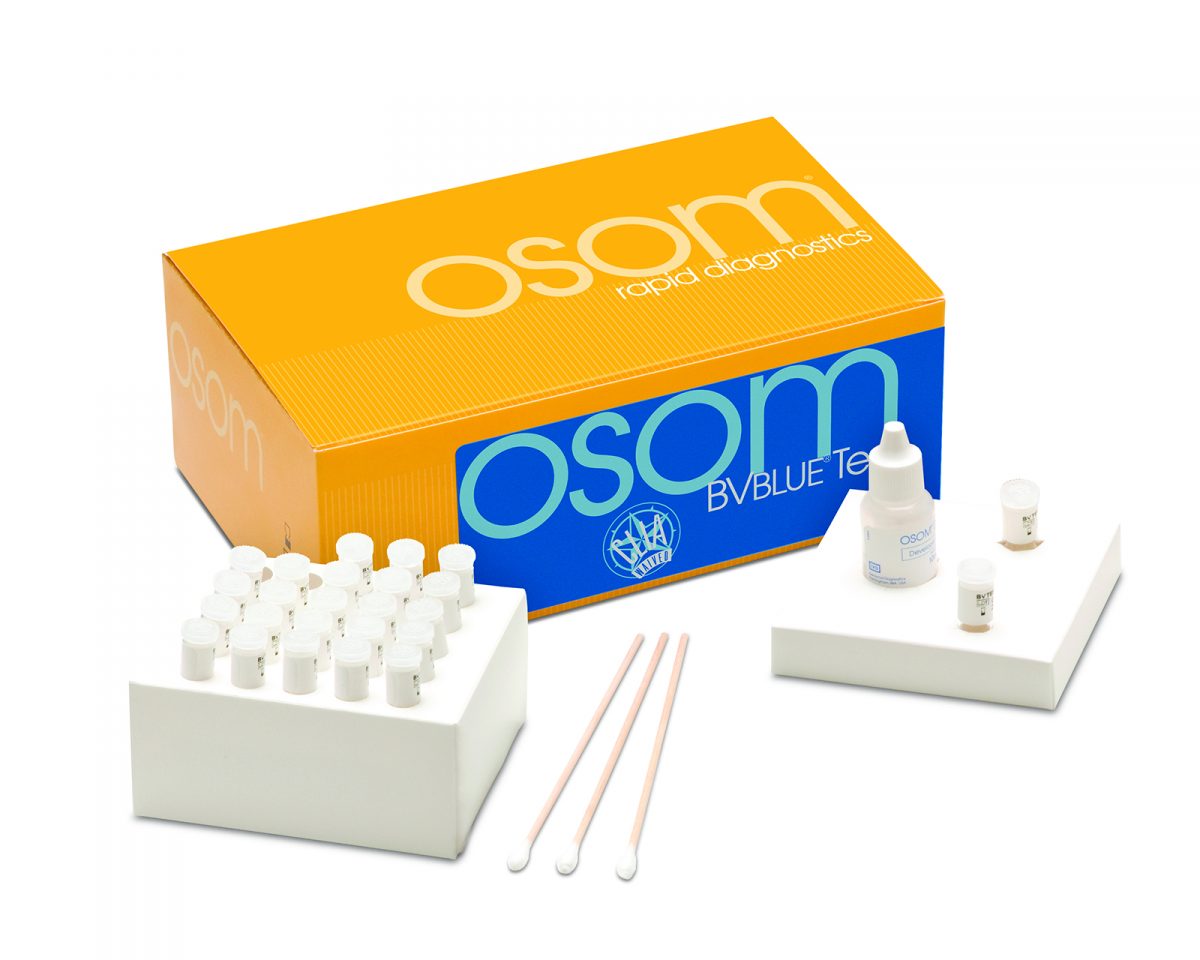In January 2017, SEKISUI Diagnostics launched the OSOM® BVBLUE® Test in Europe, Middle East and North Africa. The test is used in the diagnosis of bacterial vaginosis (BV).
The OSOM® BVBLUE® Test, combined with the OSOM® Trichomonas Test, provide comprehensive diagnostic tools for two of the most common vaginal and sexually transmitted infections in the world. “Worldwide, it is estimated that 20–30 % of women of reproductive age attending sexually transmitted infection (STI) clinics suffer from bacterial vaginosis, the prevalence of which can be as high as 50–60 % in high-risk populations”.¹
More about bacterial vaginosis
The OSOM® BVBLUE® Test delivers fast, accurate results in ten minutes by utilizing a simple procedure with less than one minute hands on time. It detects elevated levels of the enzyme sialidase, which is produced by the four major pathogens associated with the condition. The ability to rapidly diagnose a BV infection is beneficial to the patient in order to begin immediate and proper treatment, while reducing the chance of serious health complications.
“SEKISUI Diagnostics is committed to providing products that can have a direct impact on the improvement of patient care,” says Lee Lipski, Vice President of Global Sales and Marketing, SEKISUI Diagnostics. “Building on the successful adoption of this test in the US, we are pleased to be able to offer the OSOM® BVBLUE® Test internationally, which now enables physicians and laboratories in those countries to offer simple and efficient testing for both bacterial vaginosis and trichomonas infections.”
¹ Bautista et al. Military Medical Research (2016) 3:4




